Set 6: Expose Claws and Reveal Wings
Continue from the previous posture described in “Learning Yin Jin Jing for Better Mind and Body Health-Part 5”
(1) Step the left foot to the left, parallel to the right foot at shoulder width. Simultaneously, allow both arms to hang naturally at the sides. Then raise the arms laterally to shoulder height, turning the palms to face forward as is shown in Figure 1.
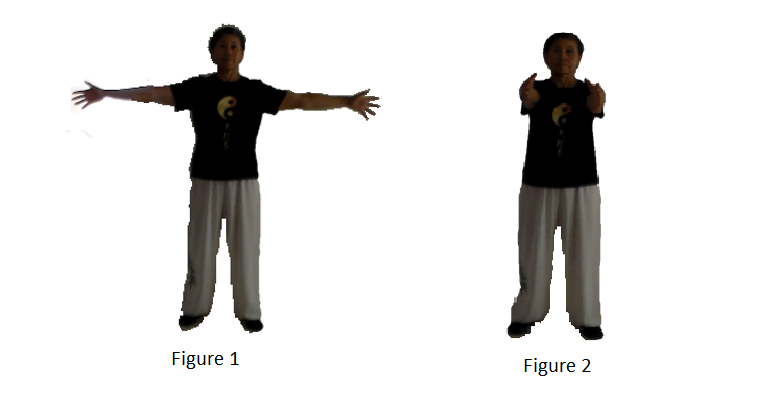
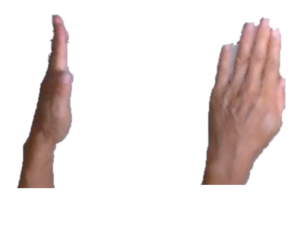
(2) Wrap the arms in front of the body as illustrated in Figure 2, then draw the hands inward, stopping at the Yun Men point with the hands shaped into willow-leaf palms (Figure 3-Willow Leaf), palms facing each other and fingertips directed upward. Maintain a forward and downward gaze (shown in Figure 4).
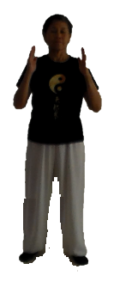
(3) Begin by stretching the shoulders and opening up the chest. Next, allow the shoulders to relax as you gently extend your arms forward. Gradually rotate your palms to face forward, creating a lotus leaf shape with your hands (Figure 5), ensuring that your fingertips are directed upward. Focus your gaze ahead and stare as illustrated in Figure 6a and Figure 6b.
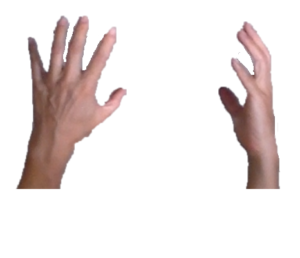
(4) Loosen the wrist, flex the elbow, and draw the arm back (illustrated in Figure 7a and Figure 7b). Rotate the palm from a lotus leaf position to a willow leaf position in front of the Yun Men point; maintain a forward and downward gaze (refer to Figure 4).
(5) Repeat steps (2) to (4) several times.

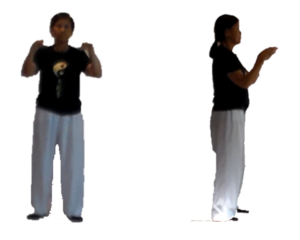
Function and Health Benefits:
- The actions of stretching the arms while pushing the palms, bending the arms and retracting the palms, as well as extending the shoulders and expanding the chest, can effectively facilitate the interaction and integration of natural Qi with the body’s internal Qi in the chest area, ultimately enhancing respiratory function and promoting the circulation of Qi and blood throughout the body.
- Enhance the muscular strength of the chest, back, and upper extremities.
Set 7 of Yi Jin Jing will be taught next week in “Learning Yi Jin Ying for Better Mind and Body Health- part 7”.
If you’re interested in exploring more about Qigong or want comprehensive instructions on Yi Jin Jing and other Qigong practices, be sure to check out the book “Qigong for Better Mind and Body Health”. Here is a sample of the book.
